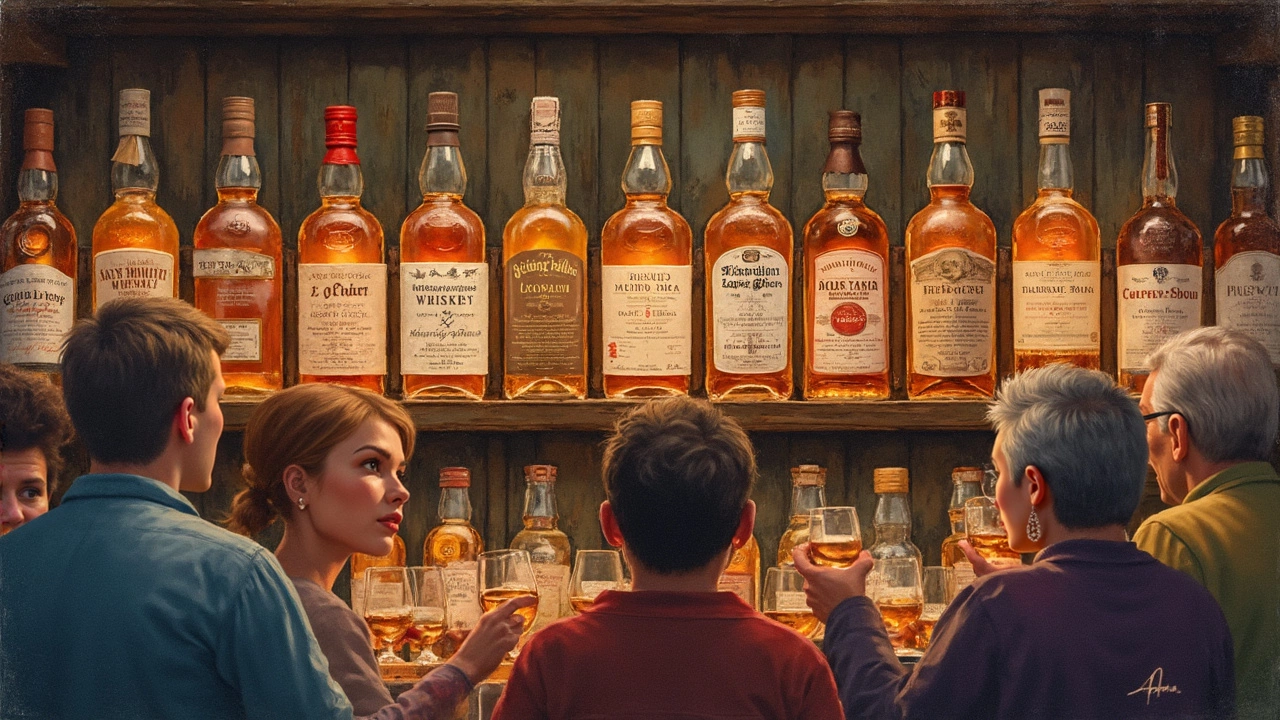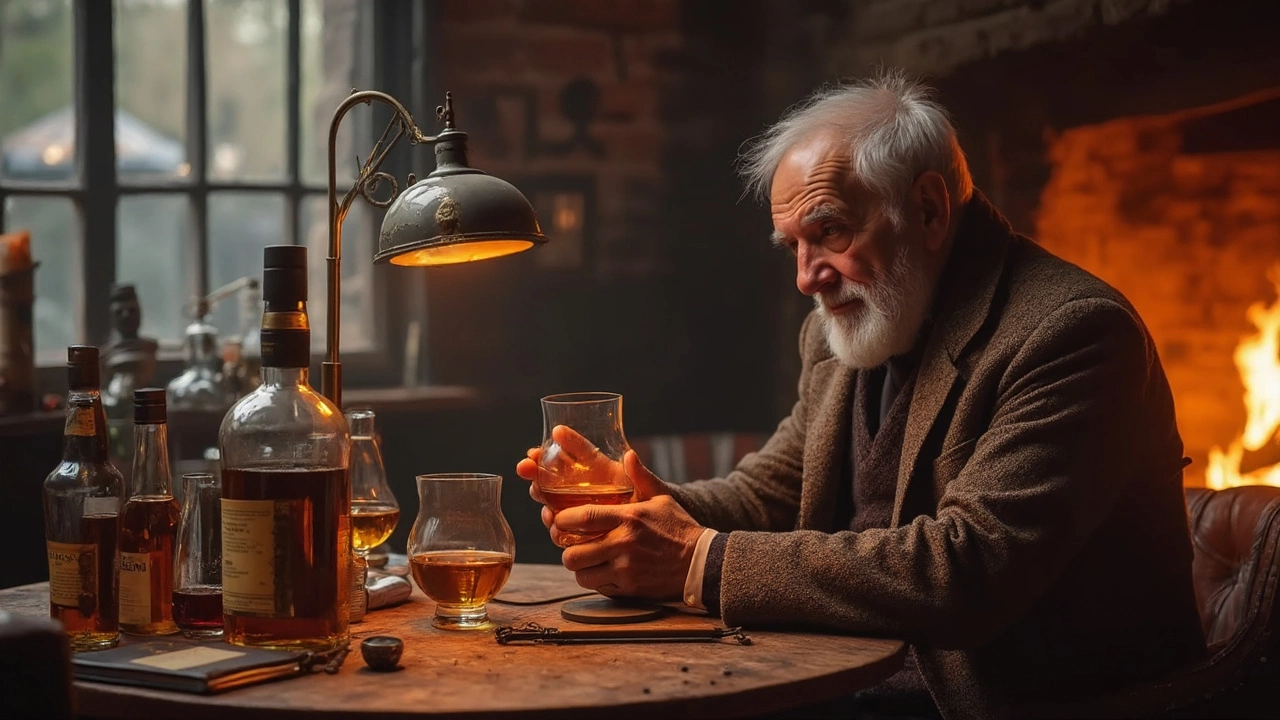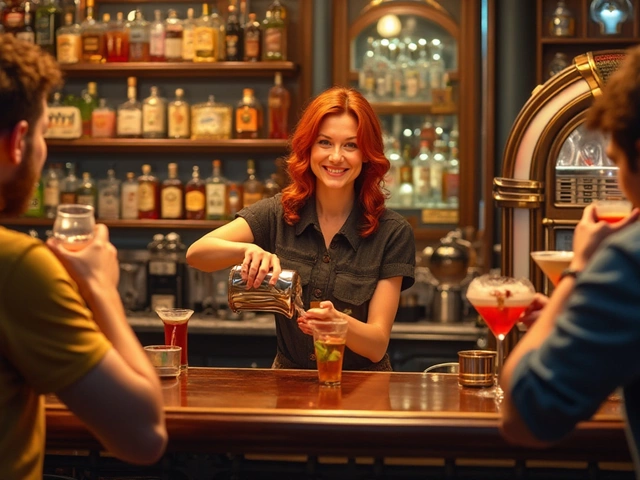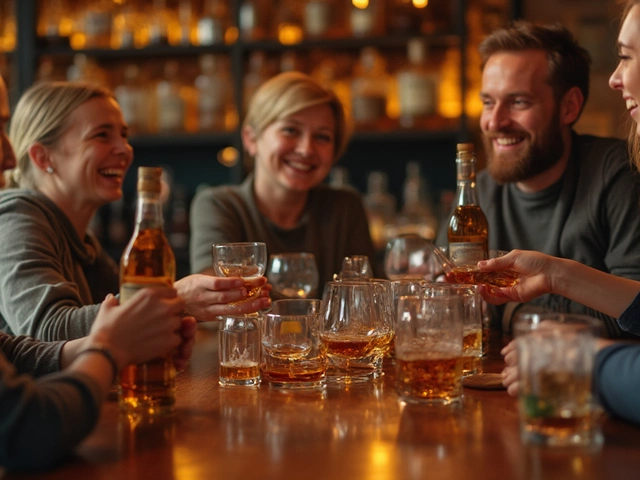So, you're about to dive into the world of whisky tasting, huh? Imagine this: you've got a glass of your favorite whisky in front of you, and you're ready to explore all it has to offer. But hold up! What's the first thing you should actually do when tasting whisky?
Most people might jump right to tasting, but a lot goes into preparation. Let’s kick things off by diving into the visual appeal. You'd be surprised how much the color can tell you. Is it a light golden hue or a deep amber swirl? A whisky’s color can hint at its age and the kind of casks used in its maturation. You see, when it comes to whisky, what you see is sometimes what you get!
However, don't be fooled just by the color. The real magic unfolds when you bring the glass to your nose. Ever hear of the 'nose' in whisky jargon? It’s basically taking a good, long sniff to pick up the various aromas. This is where things get interesting. Some say it’s like a symphony playing in your nose—fruity notes, a hint of vanilla, maybe a whiff of smokiness. It's like entering a new world with each glass.
The Visual Appeal
Before diving into the nose or the palate, take a moment to admire the whisky. Looks matter when it comes to whisky tasting. The color in your glass can reveal a lot about its story. From light gold to deep amber, each shade has something to say.
First off, where does the color come from? Mostly, it’s the cask! The longer the whisky sits in a barrel, the deeper the color gets. The type of wood plays a huge role too. Sherry casks often lend a richer, darker tone, while bourbon casks might leave it lighter.
Once you zero in on the color, you might start predicting the flavor. A lighter hue could suggest a more delicate flavor, maybe a bit floral or citrusy. On the flip side, darker whiskies might indicate bold, robust flavors.
There's a fun trick where you tilt the glass and swirl it. Ever heard of whisky ‘legs’? As the whisky drips back down the sides of the glass, its 'legs' can tell tales about its texture. The thicker the legs, the more body it typically has.
Believe it or not, the look of whisky can even reflect how it might taste. This isn't an exact science, but more of an art. So next time you pour yourself a dram, take a moment to simply look. It sets the tone for the entire tasting experience.
The Scent Symphony
When diving into whisky tasting, the nose plays a crucial role in the experience. Did you know that the sense of smell has a direct line to our memory and emotions? It’s no wonder that a single sniff of whisky can whisk you away to far-off places or bring back fond memories.
Here’s how to get the most out of the scent of your whisky. Gently swirl the liquid in the glass to release those fragrant aromas. Bring the glass to your nose and take a deep but gentle inhale. Avoid sticking your nose too far into the glass; the alcohol might overpower the subtle notes you’re after.
Identifying Common Aromas
The world of whisky offers a massive spectrum of scents. Here are a few you might encounter:
- Fruity: Apples, pears, and citrus are often noticeable, especially in lighter whiskies.
- Spicy: Think cinnamon, nutmeg, or even black pepper.
- Peaty/Smoky: More common in Scotch, this aroma might remind you of a campfire or smoked wood.
- Vanilla and Caramel: A result of maturation in oak barrels, these sweet notes can add richness.
Curious how things change with age? As whisky ages, the scents evolve. Young whisky might be vibrant and fruity, while older ones develop richer, more complex aromas.
A Fun Fact to Smell Better
If you want to fine-tune your sense of smell, try this: when sniffing your whisky, alternate nostrils. Seriously, one nostril can be more receptive at times. Give it a shot and see if you pick up on something new!
Remember, sniffing whisky is like meeting someone new—take your time, and don’t rush the introduction. By slowing down, you’re more likely to catch those intricate notes that make each whisky unique and enjoyable.

The First Sip
Alright, it's time to really dive into the heart of whisky tasting—that first sip. Some folks claim it’s like meeting someone new, where your first impression can be a defining moment. Now, that might sound dramatic, but there's something to it. Taking your first sip is all about experiencing the flavors and textures coming together in a neat little dance.
When you take that initial sip, let it roll around your tongue rather than gulping it down straightaway. This isn't a chugging contest! By allowing the spirit to coat your palate, you expose your taste buds to its full profile. You'll likely notice varied flavors such as vanilla, spices, fruits, or even a touch of smoky peat.
Slow and Steady
Here’s a neat trick: try to take a small sip first to awaken your taste buds. Once those receptors are firing, subsequent sips will reveal even more character of the whisky. Nobody becomes a pro overnight, so be patient and let the experience unfold.
The Flavor Journey
Now, have you ever thought about the pathway of flavor? Experts often talk about the initial taste or 'attack', the middle or 'body', and the 'finish', which is how long the flavor lingers after swallowing. It's fascinating because each part of the sip offers something different. Maybe you start with a bold oak flavor, transcending into a smooth honey middle, and finish off with a warm smoky trail.
Temperature and Time
Random tip? Temperature influences taste. The ideal whisky tasting temperature is room temperature, but some people prefer it slightly cooler. Timers out there, take note: often, giving your whisky some air before drinking allows it to breathe and open up flavors.
So, on your next whisky adventure, take that first sip slowly. Give your palate a chance to explore the layers within. You might find yourself savoring it in ways you never expected!
A Dance on the Palate
Alright, it's time for the main event: actually tasting your whisky. This is where each sip becomes a dance, moving smoothly around your taste buds. But it's more than just swishing it around—a lot more nuanced than that.
Start by taking a small sip. Let it rest on your tongue and pay attention to the initial taste. Does it remind you of something sweet like honey or perhaps it’s spicy, warming you up instantly? Next, swirl it gently in your mouth. This helps expose your taste buds to all the different flavors the whisky has to offer.
Understanding Flavor Layers
Whisky can have complex flavor layers. Many enthusiasts describe an evolving taste—from the moment it hits the palate to how it develops as it spreads. For example, woody notes might appear first, followed by citrus or even a finish of smokiness. It's these layers that make each whisky unique and, in a way, a small adventure in every glass.
If you're serious about understanding your whisky, consider keeping a tasting journal. Take notes on what flavors stand out and how they change with each sip. Over time, you'll start recognizing patterns and preferences in the whiskies you enjoy.
The Finish and Aftertaste
Don't forget about the finish—it's the story that the whisky leaves behind as it fades away. A long, satisfying finish keeps you coming back. It adds another dimension to the experience by providing a lingering note that can be sweet, spicy, or even dry.
Finally, many experts recommend pairing your whisky tasting with a little water. Just a splash can open up new flavors and soften harsher notes, making it a useful trick when a whisky feels too intense.
Next time you’re sipping your favorite whisky, remember: it's not just about drinking. It's an experience, a journey, and, for some, even an art form.


